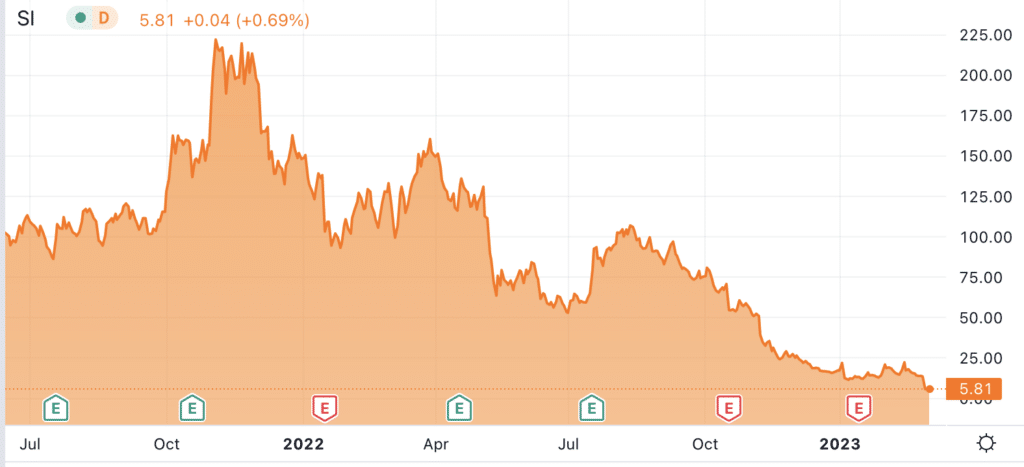This is not a particular exhortation that we should all go out and trade cryptocurrencies. But it is an observation about the cryptocurrency environment. Prices are changing wildly within crypto – that’s great, we’re traders, we want to be able to be on the right side of changing prices. That’s what trading is – being on the right side of changing prices.
However, the infrastructure of crypto seems to have its problems. It’s not true that everyone is going bust in one big wave, but it is perhaps true to say that we’re not wholly and entirely certain, as yet, where the final losses from FTX and the like are going to land. Whose balance sheets now have large holes blown in them and so who is going to go out of business. Likely enough taking with them any trading positions established across those balance sheets.

Our Trading Problem with Crypto
This poses something of a problem for us as traders. Moving prices, possible profits (and, of course, being on the wrong side, losses) but trust in the system by which we can trade them is, shall we put this mildly, somewhat fragile? There is an answer, which is to trade the prices without using the system – contracts for differences. In a CFD the counterparty is not the wider crypto system at all – it’s the brokerage offering the CFD. This exposes us to all the credit risks of having a counterparty, of course it does. Plus, all the risks of whatever trade we might put on. But it does also remove us from the ongoing credit risks of where the FTX losses are going to land. Which might be the appropriate thing to worry about.
As an example, take Silvergate Capital (NYSE: SI). The stock price at SI dropped 50% on March 1. A bit of a recovery then down again to a 5 day loss of 60% and change. Why? Well, it’s got to review its books with its auditors. That’s not a good sign at all. That in itself drove BTC and ETH down 5% (along with most major cryptos) as near all marketplaces fled Silvergate. Now, we want to be able to trade those 5% price movements. Heck, we might want to trade Silvergate itself, that’s easy enough. It’s NYSE listed and we can do that through any broker. But if we think that the entire crypto infrastructure is fragile then we might not want to trade through that infrastructure.

Where Are the Crypto Losses After FTX?
Which is our problem. Firstly, there’s all that about FTX and their losses. Some certain number of exchanges have closed as a result of that. Coinbase is being asked interesting questions about its native coin. And now we’re hearing that Silvergate, along with others, has been borrowing from the Federal Home Loan Banks. That ups the gearing that still has to be paid off even if crypto gets stuck in some now not-operative exchange. Risk is higher with gearing, as we all know and as is obvious.
But in a way trading crypto right now is a bit like trying to trade Exxon but not quite trusting the NYSE. Or perhaps more accurately, wanting to trade Russian stocks but knowing that we can’t access MICEX trustworthily. This is a problem for us, obviously.
We Could Avoid the Crypto System but Still Trade Crypto
One answer is to trade upon the prices of crypto assets without actually having crypto assets. That is, to just be trading the price without using that crypto infrastructure. You know, the crypto infrastructure of exchanges and so on that may be exposed to FTX or have interesting problems with their auditors and so on.
Which is, again, just what Contracts for Difference (CFD) brokers can offer. We have the direct relationship with the broker, our systematic worries go away, we need to think about the accounts of the broker only. Well, plus what the actual trade we want to place is, the risk of it and so on.
This Is About Trading Crypto, Not Whether to Trade Crypto
As at the top this is not an insistence that we should all trade crypto prices. Nor is it even a hint that CFDs solve all problems nor are suited to everyone. But this specific problem CFDs do solve.
We can see major pillars of the crypto economy and infrastructure toppling as the contagion from varied failures ripples through that system. We don’t know – largely because no one knows as yet – who is going to be left standing at the end of the slaughter. So, we don’t want to use that unknowably fragile system to trade crypto pricing. But we might well want to trade crypto prices. If both of those are true, then the answer is CFDs – allowing us to trade crypto pricing but not being reliant upon the fragility of the crypto infrastructure itself.